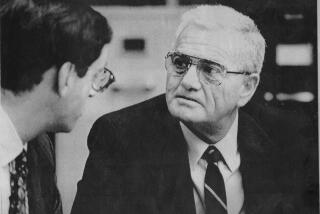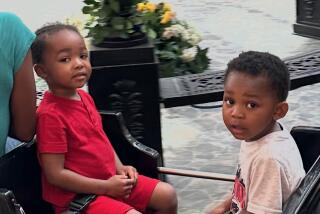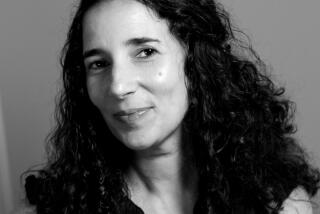Mother Holds Key to Study About Twins
- Share via
It was early November--overcast, cold, with brittle leaves scraping down the sidewalk--when my mother stepped gingerly onto a crowded Berkeley bus. For a moment, as the smell of damp wool rose among close-pressed bodies, she hesitated: She was pregnant--her fourth time--and didn’t quite trust her balance.
Even with five months still to go, my mother already looked--and felt--as if she could deliver en route.
Then, a voice from a seat beside a window reached her. “Here, honey, you can’t be standing.” It was from an old woman, who vacated her seat as soon as she saw my mother’s condition.
“And when is the blessed day?” the woman asked.
My mother, having sunk gratefully down, was slightly embarrassed to tell her. Her due date, she admitted, wasn’t until March.
“March! Oh, honey,” the woman said, shaking her head gravely and looking at her midsection. “You’d better talk to your doctor. He’s made a terrible mistake.”
Actually, the woman was right. A mistake of sorts had been made.
In her seventh month of pregnancy, after her physician placed his hands gently on the abdomen she no longer could encircle with intertwined fingers, my mother learned she hadn’t been eating for two after all.
She’d been eating for three.
For herself, for yours truly and for a twin brother.
*
Things, of course, have changed quite a bit since the days when twins were discovered much the way melons are chosen at the market. Pregnant women today can watch their embryonic children suck their fingers on television screens and can learn if they are carrying a boy or a girl. Unlike my mother, they can also find out long before they’ve outgrown their regular wardrobes that they’ll need two cribs instead of one.
Which doesn’t mean there is any less interest in twins, or that researchers no longer have anything to learn about them.
To the contrary.
Twins, it seems, are receiving more attention these days than ever before.
Recent research involving both identical and fraternal twins has been conducted all over the world to learn about everything from mental disorders and behavioral traits, to why some people get sick and others remain healthy.
One controversial study released last month, conducted at Boston University and Northwestern University, studied gay and lesbian identical twins and found a strong genetic component to homosexuality.
“A lot of people are interested in doing studies of twins,” said Dr. Thomas Mack, who heads the California Twin Program at USC. “But most of the studies have been based on small numbers.”
Lest anyone accuse USC of having a narrow focus, Mack said researchers there already have contacted 50,000 twins born in this state--including me, my womb-mate and a healthy number of Ventura County residents. The study eventually could include as many as 100,000 twins.
For the past 12 years, USC researchers have been involved in another twin study, called the International Twin Project, which includes about 17,000 pairs of identical and fraternal twins in the United States, Canada and several other countries. The goal, Mack said, is to determine why one twin gets a life-threatening disease, such as cancer or diabetes, while another doesn’t.
But that focus alone, he said, could not answer one of the most important questions: whether a disease is primarily caused by genetics, environment--or perhaps something else.
“There are good studies, for example, that show that if twins are both beautiful, they will have more friends, which increases the chance of their getting a virus that could cause the disease,” he said. “If twins are both ugly and don’t have friends, their chances are lower for getting a virus.”
With the California study--funded by Proposition 99, the “cigarette tax”--the focus will be much different: comparing twins and lifestyle issues.
Anyone who receives a questionnaire in the next few weeks will be asked about such things as job history, smoking, alcohol consumption and diet.
*
What’s interesting to me, of course, is that the one person who knows me just about as well as my twin brother--my mother--won’t be asked to participate in the study. With Mother’s Day just around the corner, my thoughts turned to mothers, and it occurred to me that her perspective could be valuable.
The same thought occurred to Robin Miller, president of the Simi Valley Mothers of Twins and Triplets Club. “I think the mothers know the kids best,” Miller said.
Mack agreed that much might be learned from the moms.
“Obviously, there are some things only the mother would know about that had an effect” on the twins, he said. “Possibly some experience during pregnancy might have contributed to something.”
In my own mother’s case, I know which experience it would be.
It would be a lesson in kindness she tried to pass on to her children--the one she learned from an old woman a long time ago, who gave up her seat on a crowded downtown bus.






